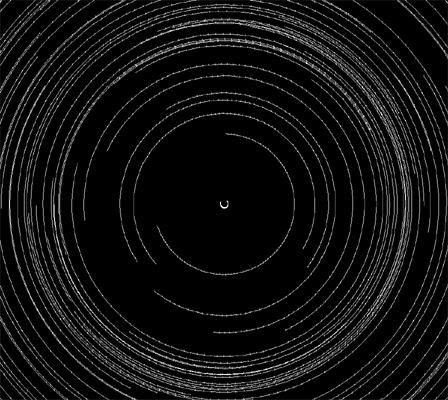
 |
Polaris, the current North Star, has been a boon to sailors and other travellers for over a thousand years. Its value for navigation arises form the fact that its position on the sky does not change much over the course of the night (as can be seen from the figure) and that it indicates true north. Both of these properties follow for Polaris's location above the north pole of the Earth. Interestingly, tugs from the Moon and Sun cause Earth's spin axis to precess (rotate slowly) in space, describing a full circle of amplitude 23.5 degrees every 26,000 years. Earth's north pole points close to Polaris for only two or three thousand years of each cycle, so it is lucky that we started sailing while there was a bright North Star to guide us. For further discussion of precession and the North Star click here.
 Return to the Astronomy Workshop
Return to the Astronomy Workshop